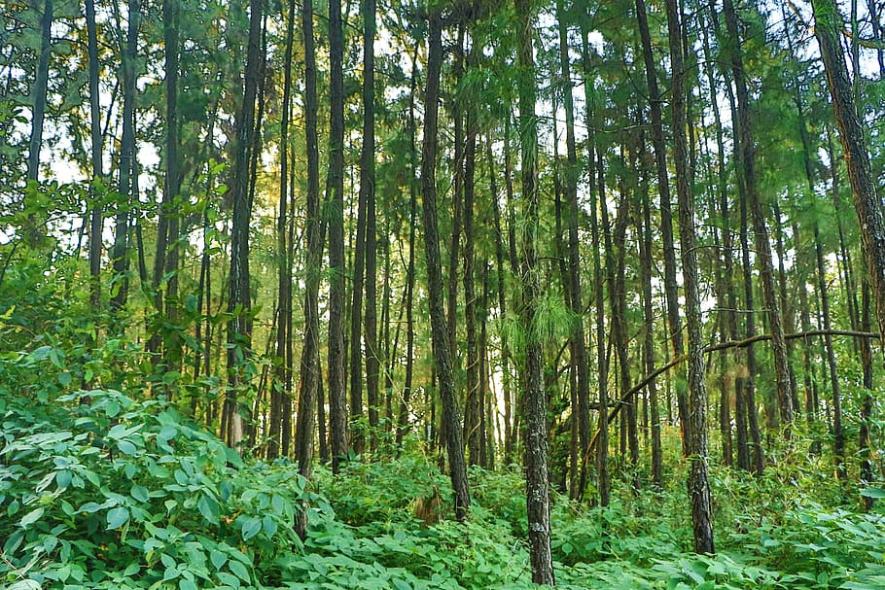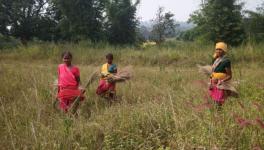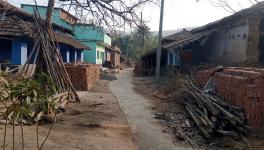India’s Key Forests on Chopping Block

Representational Image. Image Courtesy: Wallpaper Flare
Coal minister Pralhad Joshi recently informed the country that India’s coal production rose to 784.41 million tonnes between February and April 2023, compared with 681.5 million tonnes during the same period last year. This reportedly marks an increase of 15.10%.
Joshi said he expected domestic coal production to touch 1.31 billion tonnes by 2024-25. He announced steps his ministry had taken to enhance coal production. These included higher utilisation of mining capacities of captive coal blocks and the augmentation of railway connectivity to these blocks.
But the most significant step the Union Ministry of Coal has taken is its decision to add 141 new coal blocks through commercial auctioning. This is part of the seventh round of mines put on auction, with 106 coal blocks up for grabs on 29 March.
Some of these coal blocks are located in central India and will involve chopping down vast swathes of forests, namely the Tara Block in Chhattisgarh’s Hasdeo Arand forest and the Mahan forest in Madhya Pradesh. While Tara has a forest cover of 81% density and is spread over 1,596 hectares, Mahan has a forest cover of 97% and spreads over 372 hectares. Hasdeo Arand, one of the last contiguous stretches of dense forest in central India with a land mass stretching over 1,70,000 hectares, has 22 coal blocks underneath it. The Mahan forest extends to the Sanjay-Dubri National Park and Tiger Reserve on its west and the Guru Ghasi Das National Park on its southern boundary.
A decade ago, the Union Ministry of Forest and Environment categorised these forests as inviolate. The former MoEF minister Jairam Ramesh had dubbed these “no-go” areas. But the problem with Ramesh and subsequent MoEF ministers was that they failed to give their observations legal sanctity.
Post-independence, forest and agricultural land has been taken to make space for power and mining projects. Mahan falls in the Singrauli-Sonbhadra region—considered India’s energy capital. Several power plants have come up here due to plentiful water and coal supplies. There is no contest India needs electricity supplies; the problem is that the emissions from these power plants remain unmonitored. In the last few years, a recurrent problem has been the breaking of several ash dikes built around them, submerging villagers and cattle. This belt has now been dubbed as one of the most critically polluted regions in India, plagued by severe air and water pollution.
When this reporter visited the Mahan forest almost a decade ago, the slogan “Jal, Jungle, Zameen” was painted across every home in a swathe of villages. Summing up the villagers’ relationship with these forests, Bachan Lal, a farmer of Amelia village in Singrauli, said, “The forest is our mother. We cannot live without it. Our livelihood, our water, our air is all linked to it.” Villagers from 54 villages had organised themselves under the banner of the Mahan Sangharsh Samiti. They pointed out that coal mining in this forest would result in the displacement of over 25,000 people.
The record of Indian governments in rehabilitation and compensation inspires no hope or confidence. Elderly Jeetlal Vaiga had already been displaced when the Reliance Sasan Ultra Mega Power Plant had come up. He explained how he found it impossible to start life afresh in a tin shack with the hot summer sun beating mercilessly down on his new home. Vaiga narrated the plight of many villagers who had died by suicide rather than move to their new surroundings.
The situation is the same in Hasdeo Arand, where tribal families heavily depend on the forest for their livelihood, food, water, and medicinal needs. In Mahan, tribals said each family stood to earn around Rs 1 lakh a year from the produce they collected from the forest. It is similar in Hasdeo Arand. Over 1,000 members of tribal communities living in Hariharpur and Fatehpur villages in the Surguja area of Chhattisgarh faced displacement and had been opposing giving up their land for a new mining project, having witnessed great suffering in nearby areas due to mining companies’ operations.
The Hasdeo Arand coal fields comprise Tara, Parsa, Parsa East, and Kente Basan. The total mining area of Parsa is more than 1,200 hectares, 800 of which is forest land. Permission to mine in forest and revenue land requires the Gram Sabha’s consent, but the Hasdeo Arand residents claim they never consented to the projects of mining companies. The Chhattisgarh Bachao Andolan activists told this reporter that the local administration had conducted fake Sabhas or meetings in which signatures were forcibly obtained behind locked doors. They said the opinion of the majority of villagers was never sought. On 11 October 2021, 350 villagers walked 300 kilometres to the capital, Raipur, to protest against these “fake sabhas”.
The two issues they highlighted during their march were that they had been assured the second stage of mining of the Parsa East Ketan coal block would start in 2028, but it was advanced to 2021, and “forcible” land acquisition continued. The second issue was that land acquisition for Parsa’s new block was based on fraudulent consent obtained in “fake Sabhas”.
The protestors met the governor and Chhattisgarh Chief Minister Bhupesh Baghel, who gave them assurances. The villagers walked back. But within a week of returning home, they learned the MoEF had given the green signal for mining to start in the Parsa Block. Alok Shukla, a leader of the Chhattisgarh Bachao Andolan, told the media that the villagers believed both the central and the State governments had failed them.
Warnings from different government bodies to the MoEF have also been ignored. The Central Mine Planning and Design Institute Limited, involved with planning for coal exploration, had cautioned the MoEF that coal deposits in Mahan will provide optimum coal only for seven to eight years. They questioned why a key forest was being destroyed for a short-lived gain.
The Ministry of Coal hoped to get around this criticism by arguing that the proposed coal mining in Mahan will be underground (not open cast). But experts warn that the spillover through mining in terms of residue and construction of roads, etc., will destroy a large swathe of forest area.
The Ministry of Mines justified opening up a new coal block in Hasdeo Arand based on the report submitted by the Indian Council of Forestry Research and Education, which had permitted open-cast mining here. How ICFRE, a body researching forestry, could sanction such a move defies imagination. A caveat ICFRE’s report contained was that 14 of the 23 proposed coal blocks should not be cleared, given their density and the pristine quality of the forests.
But the Wildlife Institute of India has emphasised that the vast biodiversity in this region, one of the best habitats for elephants and tigers, serves as a key corridor for wildlife. In 2021, leading conservationists wrote to the Chhattisgarh government, emphasising how this forest was a catchment area for the Hasdeo River, a major tributary of the Mahanadi. Although the mine was allotted to the Rajasthan Rajya Vidyut Utpadan Nigam, the Adani Group has operated it since 2013 and has a 74% share in the project (and its earnings).
The ICFRE made some critical observations of how mining has been undertaken so far since it has opted for horizontal digging rather than digging deeper, thereby not touching the millions of tonnes of coal lying at the bottom.
Experts are concerned that the loss of these primary forests will irreversibly damage the rich biodiversity in central Indian forests. Debadityo Sinha, who leads the climate and ecosystems practice at the Vidhi Centre for Legal Policy, has warned about irreversible damage to these forests by mining, thermal power plants, and damming rivers.
But the coal ministry bypassed the issue by stating that the “required forest and environmental clearances would have to be obtained by a successful bidder” in its auctions.
According to the Ministry of Coal, the mines are on offer under the Coal Mines Special Provisions (CMSP) Act and the Mines and Minerals (MMDR) Act. In all, 106 coal mines are being put up for auction under under the CMSP and MMDR Acts.
India lost over 6 lakh hectares of forest in recent years and has witnessed the highest rise in deforestation in 30 years, with a surge in losses between 2015 and 2020, according to a report by UK-based Utility Bidder.
The Forest (Conservation) Amendment Bill, 2023, introduced in the Lok Sabha on 29 March, will de-reserve lakhs of hectares of green areas that are deemed forests. Currently, there is no clear estimate of how many hectares could be lost if this amendment is implemented on the ground.
Sinha said that according to the amendment, forests not notified before 1980 (when the Indian Forest Act was passed) would no longer require prior approval before getting axed.
Conservationists say the government cannot sideline its own people when it draws up plans to develop energy resources. It also forgets the critical role of forests in mitigating climate risks, purifying air, and sequestering carbon.
The author is an independent journalist. The views are personal.
Get the latest reports & analysis with people's perspective on Protests, movements & deep analytical videos, discussions of the current affairs in your Telegram app. Subscribe to NewsClick's Telegram channel & get Real-Time updates on stories, as they get published on our website.
























